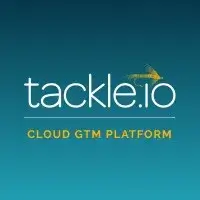Ready to launch your own podcast? Book a strategy call.
Frontlines.io | Where B2B Founders Talk GTM.
Strategic Communications Advisory For Visionary Founders
Conversation
Highlights
When Product-Market Fit Tools Don’t Find Their Own Fit: Viable’s Pivot to Enterprise Analysis
Sometimes the most valuable pivot comes from watching what your “wrong” customers do with your product. In a recent episode of Category Visionaries, Daniel Erickson, Founder and CEO of Viable, shared how an unexpected pattern of enterprise usage led his team to abandon their initial product-market fit measurement tool and build something entirely different.
The irony isn’t lost on Daniel. His company started as Viable Fit, offering a turnkey solution to help startups measure product-market fit. The inspiration came directly from Superhuman’s widely-read blog post about their measurement methodology. “When I started to talk to them and other companies, I realized that there was a huge time suck in the manual analysis side of that process,” Daniel explains. “In fact, Superhuman themselves were spending about 12 hours a week just analyzing that data.”
The False Start
The initial launch seemed promising. Over 500 companies signed up to use Viable’s product-market fit measurement tool. But Daniel quickly discovered a fundamental flaw in their target market: “There’s actually not a whole lot of money to extract from pre Product Market Fit startups.”
This realization coincided with an interesting pattern – large enterprises with established product-market fit were using their tool. The team began investigating why these companies, who clearly didn’t need help measuring product-market fit, found value in their platform.
Finding the Real Problem
The investigation revealed a deeper truth about enterprise feedback challenges: “80% of data that is collected by companies today is unstructured text,” Daniel notes. “It’s things like survey responses and App store reviews and social media mentions and call transcripts and help desk tickets and all of those kinds of things.”
This data lived in silos across different tools and teams, making it nearly impossible for product teams to extract meaningful insights without massive manual effort. As Daniel explains, “Product tends to be the team that needs these insights from those other teams. So generally speaking, a product manager will go to the head of customer support and say, ‘hey, what are the big things people are complaining about right now?'”
The problem wasn’t just the manual effort – it was that teams could only report on “the most recent thing or the loudest thing.” They couldn’t see the full picture across all customer feedback channels.
Building the Right Go-to-Market Engine
With their pivot to enterprise, Viable had to completely rethink their go-to-market strategy. They developed three primary channels, each building on the success of the previous one:
- Initial enterprise deals came through their investor network, which Daniel considers “probably the best way to sort of get your flywheel going.”
- They then expanded through targeted outreach, “specifically looking at the companies that were working already with us and then trying to figure out like, okay, who is the actual buyer here, who are the users, what’s our best way in?”
- Finally, they invested heavily in content marketing, achieving “about 50% month over month increase in website traffic just from our content initiatives.”
The Category Creation Challenge
Perhaps the most interesting challenge Viable faced wasn’t technical – it was categorical. They weren’t simply selling a better solution; they were creating an entirely new product category. “When you’re creating something new and you’re on sort of the forefront of what’s possible, you don’t have all of that sort of framework built out for you within your target customers,” Daniel explains.
This meant their sales cycles required significant education. Enterprise buyers didn’t have budget line items for AI-powered feedback analysis because the category simply didn’t exist yet. While this presented a challenge, it also created an opportunity to define the space.
Building the AI Moat
For AI-focused startups, conventional wisdom suggests data is the primary moat. Daniel agrees but with an important distinction: “With any sort of AI startup, I believe that your biggest moat is always going to be your data moat, specifically around training data.”
Viable approached this challenge through two parallel paths. First, they built feedback mechanisms into their product – “When you thumbs something up, it actually tells us that was a good answer, and so we can use that as training data going forward.” Second, they developed systems to generate high-quality training data internally when needed for new features or capabilities.
Looking ahead, Daniel sees an opportunity to evolve beyond simple analysis into what he calls “generative analysis,” helping teams tie customer feedback directly to company goals. It’s an ambitious vision, but one that stems directly from their deep understanding of how enterprises struggle to extract value from customer feedback.
The lesson for founders? Sometimes your most valuable market insights come from the customers you didn’t intend to serve. The key is noticing when your “wrong” customers might actually be pointing you toward a bigger opportunity.
Actionable
Takeaways
Identify Manual Pain Points Ripe for Automation:
Look for time-consuming, manual processes within your target market that could be streamlined or automated using AI and other technologies. Focus on solving these pain points to deliver immediate value to customers.
Adapt Your Product and Target Market Based on Feedback:
Be willing to pivot your product and target market based on early customer feedback and usage patterns. In Viable's case, this meant shifting from a startup-focused tool for measuring product-market fit to an enterprise-focused platform for analyzing diverse customer feedback.
Leverage Multiple Channels for Enterprise Sales:
Drive enterprise sales by tapping into your investor network for early leads, crafting personalized outreach to potential buyers, and investing in content marketing to build brand awareness and credibility.
Educate Customers on the Value of Your Category-Creating Solution:
When pioneering a new category, prioritize customer education to help them understand the value of your solution and how it differs from the status quo. Highlight the time and cost savings, as well as the strategic benefits, of adopting your product.
Build a Data Moat to Support AI-Powered Features:
Create a competitive advantage by building a robust dataset of user-generated content, ratings, and annotated examples that can be used to train and improve your AI models over time. This data moat will enable you to develop more advanced, interactive features that set you apart from potential competitors.



































































































